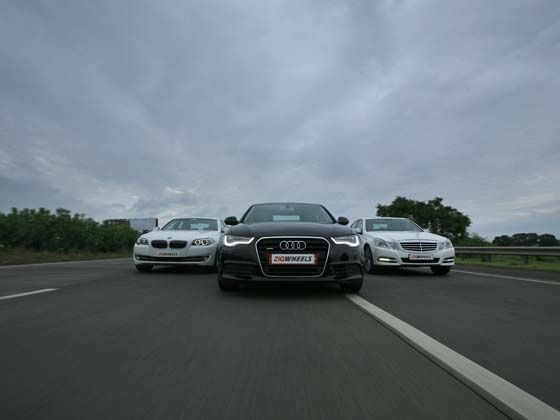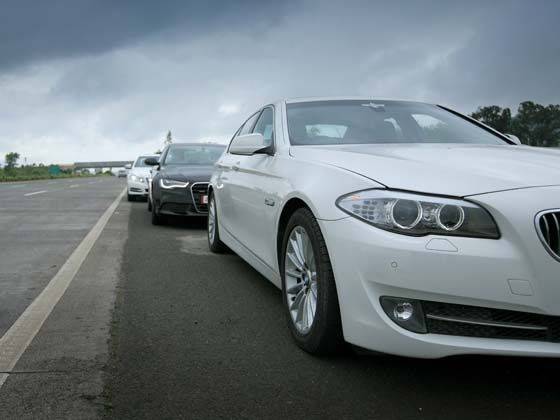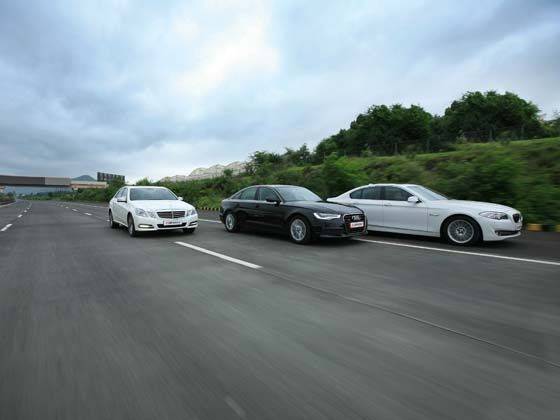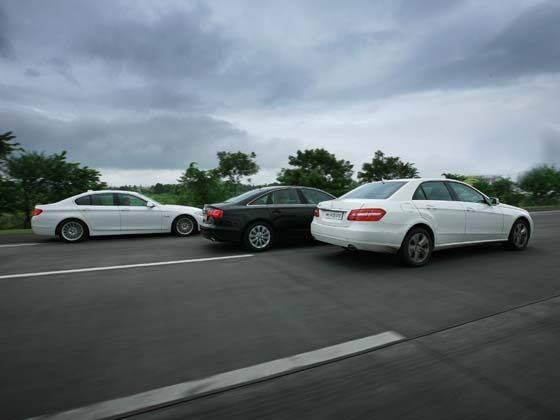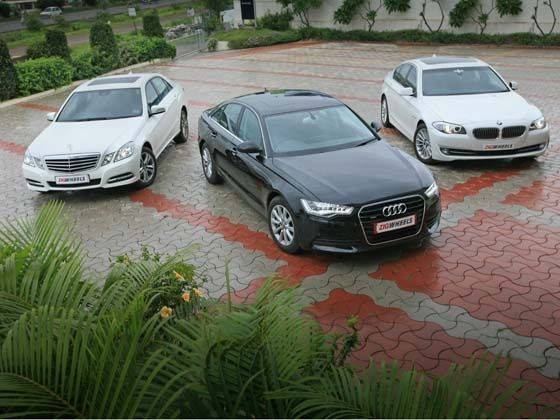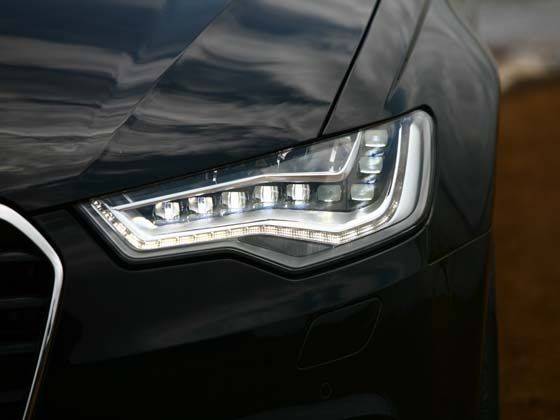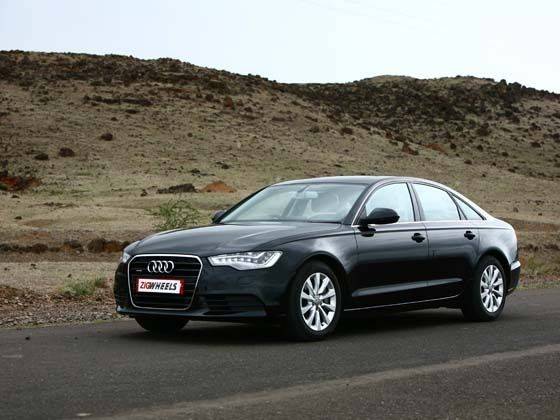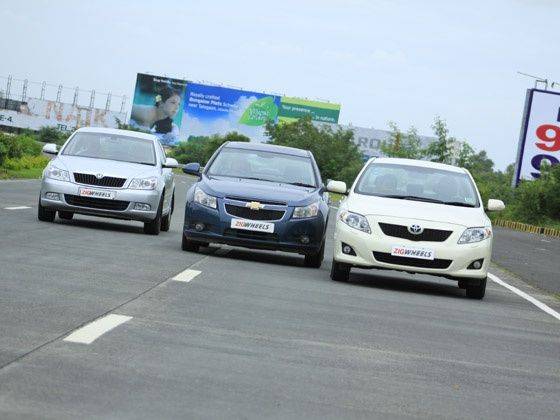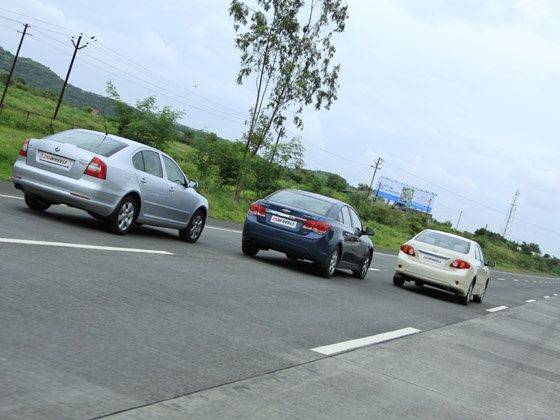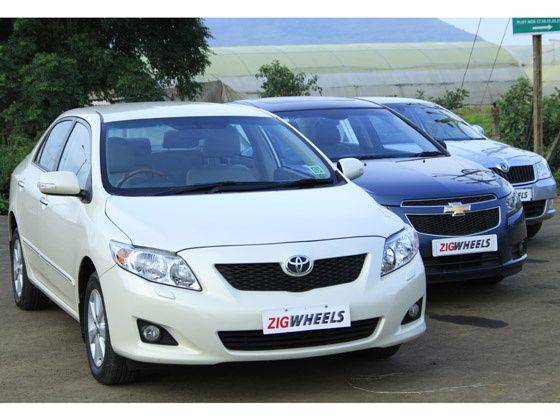Volvo S60: Road Test
by Sopan Sharma Photography: Kunal Khadse Posted on 02 May 2011
Posted on 02 May 2011 152850 Views
152850 Views 7 Comments
7 Comments
 Posted on 02 May 2011
Posted on 02 May 2011 152850 Views
152850 Views 7 Comments
7 Comments
One second
it's a plush, safe family sedan; the other it's a roaring tarmac
scorcher throwing you back in the seat. The Volvo S60 is the sort of a
car that can be what you want it to be, all delivered in a sweet and
sexy package. We return stumped


Get alerts on new cars reviewed by ZigWheels
As the new car rolls into the ZigWheels garage, its
pretty, shiny orange paintjob complimenting the lithe, muscular and
likeable lines of a sedan, one cannot help but letch. ‘Naughty but Nice’
is what Volvo has
been aiming for with its new range of cars, attempting to ditch its
serious, safe but somewhat staid image by adding a liberal sprinkling of
style all-round, and the XC60 SUV managed to do hit the target, even if
it still had a macho, masculine appeal to it. The S60 sedan however, is
sweet, sexy, safe and startling – all at the same time. If the XC60 is a
go-anywhere-but-still-look-hot Lara Croft, the S60 is Wonderwoman. And
all this even before you have settled into the orthopedically designed
driver’s seat. I have a good feeling about this.
Solid start:
The S60, now in its second reincarnation, was conceived when Volvo was still owned by Ford,
and before the company was handed over to its Chinese owners Geely much
more recently. This was still a time when the Swedish carmaker that has
had ‘safe’ as its USP over the decades was trying to reinvent itself,
go more upmarket and stylish to eat into the entry-level luxury sedan
market, dominated by the Germans. As a carmaker Volvo has had its
fundamentals right over all these years – in fact the world record for
the highest mileage in a car is held by a 1966 Volvo P1800, which has
run 45 lakh kilometers, and is still running. The S60 however was a part
of the company’s plans to revitalize the image, and did manage to break
away from its earlier, boxy design philosophy. But when the current
version was shown off at the Geneva Motor Show last year, the world
stood up and took notice. Read letched.
And why would it not. The latest S60 was penned by
Brit designer Steve Mattin, who was the chief of Volvo design until
recently, and had been making a career in designing cars since he was
15. What has come off the boards though is a car that easily has the
most presence in its segment. Our pet grouse with European entry-level
sedans has been that they often end up having fairly unremarkable
design, while yet demanding high price tags, mostly for the badges. Not
the S60 though, which appeals to conventional car design proportions and
aesthetics, yet offering generous dollops of modernity and fresh ideas
when it comes to the exteriors.
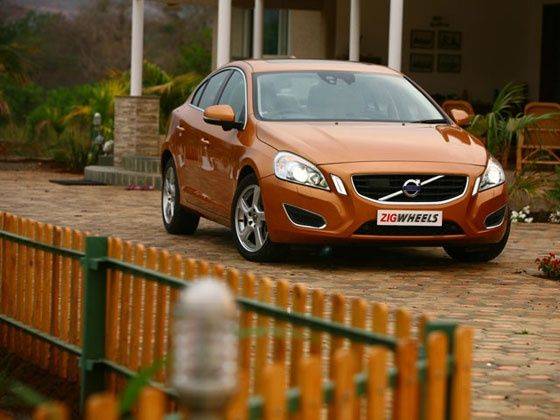
Exteriors:
To start with, it has the aura of a four-door coupe
which makes for an instantly appealing stance, only enhanced by the
smart use of lines along the sides to impart a lithe, muscular aura to
the package. The large Volvo badge that runs across the grille makes for
a confident and proud statement of the company, but the real skill of
the design team behind the S60 lies in making the whole fascia gel, with
the swoopy headlamps and a friendly, smiling grille. The coupe-like
rounded off roof meets the strong waistline, the flared-out rear fenders
and the chunky rear bumper connection in a smart tail, with a rising
swoop at the boot for enough silhouette entertainment to last a few
years.
Parts bin:
Under its skin, the S60 comes with impressive
credentials. What is called the Volvo Y20 platform is actually Ford’s
versatile and proven EUCD, which carries cars ranging from big brother
S80, the Ford Mondeo, even the Land Rover Freelander 2. While the
platform has been around for a while, the new S60 has sufficiently
tightened up bits that shine once the car is put through its paces. Just
for academic interest though, the car features a redesigned chassis
that is 47 percent stiffer than its predecessor, tauter springs and
bushes in the suspension, and a quickened up steering. Now to pop the
hood.
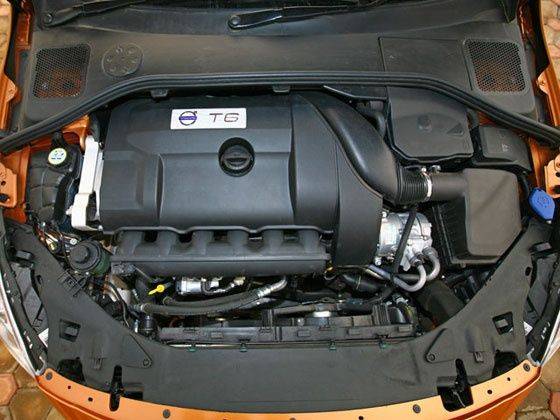
Volvo India has played it smart when it comes to
engines options for us, which happen to be the most powerful petrol and
diesel units in the S60 range respectively. We got our hands on the T6
variant, which is powered by a hopping mad inline-6, turbocharged petrol
engine which puts out 305PS of power and 440Nm of torque, the pushing
power figure especially impressive given that this is a 3-litre petrol
mill. Mated with a super-quick-slick 6-speed automatic transmission and
put down on the road through a Haldex all-wheel drive system, the big
push is not spewed out – it flows out more like a ribbon of thrust.
SLIDESHOW: Kunal's handiwork!
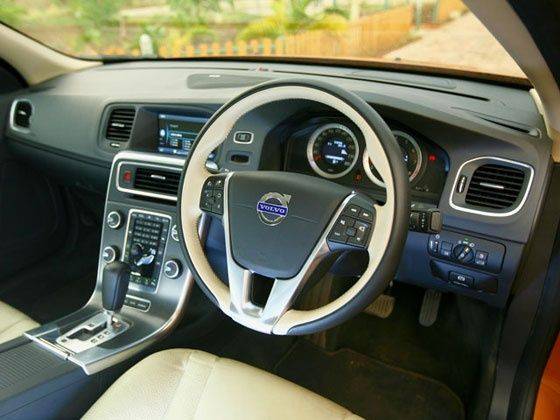
Interiors:
As you step inside and shut the solid door, you are
greeted by fairly clean, almost antiseptic interiors. The choice of
plastics and materials is top-notch, and the feeling of plushness is
clear and no-nonsense. The seats themselves are some of the most
comfortable in automobiles, and the fact that a fair amount of research
has been put in their design is obvious. There isn’t too much excitement
on the dashboard, but somehow the view from the driver’s seat is not
boring at all. Blame it on the heads-up display that keeps lighting the
windscreen up if traffic inches too close, or the blind spot information
system that shows up as a small but conspicuous blinking light on the
A-pillar, there is always something to keep the driver aware. Apart from
the numerous gizmos and gadgets that are now almost standard fitments
in all Volvos, the
S60 boasts of an advanced pedestrian recognition system, using bits
borrowed from military-tech, no less! This state of the art safety
feature is a boon for city drivers, and remains active under 40 kmph. A
number of cameras allow the car to ‘see’ an obstacle in its path, and
should the driver not react, the car will automatically bring the
vehicle to a halt before hitting the obstacle. It’s not the smoothest
braking, but it does get the job done and should also wake the driver
up!
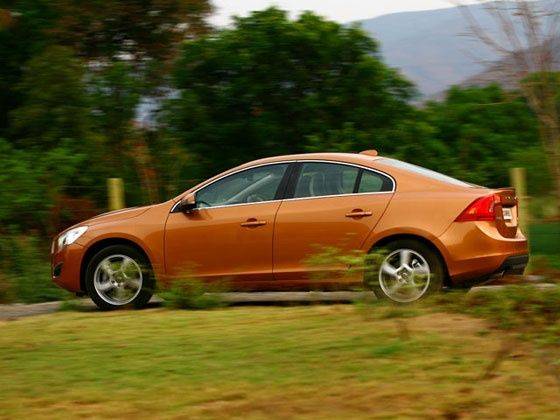
The drive:
The S60 in its T6 garb has an uncanny ability to
transform from a comfortable family sedan to a roaring driver’s machine,
blessed with grip from all four driving and dripping with feedback, in
the time it takes to push the pedal to its deepest recess. While doing
all this though, the car never lets go of its basic genetics – those of a
strong, solid sedan, which is not a mean feat to achieve, and goes far
in distinguishing this baby from its direct rivals, which
characteristically excel, but fixate on one particular quality for their
users.
0-100 km/h comes up in a blazing fast 7.1 seconds
and car accelerates from 40 to 120 km/h in kickdown in a scant 8.5
seconds, aided massively by the slick gear shifts from the gearbox. Just the quality of this box is in the league of the twin-clutch contraptions that we have been seeing in the Volkswagens and Skodas,
and its ability to judge the right gear for the condition is
impressive. That being said, the S60 is not all about acceleration and
is happy to hum along at a tonful of speed with precious little noise
seeping into the cabin.
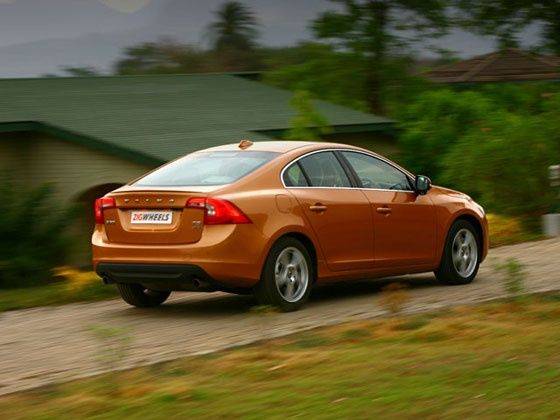
And while you are in the middle of finding out how
strong the acceleration is, or how refined the cruising, you may just
miss out on how good the suspension really is. Our test car was equipped
with the FOUR-C suspension – Volvo’s pet name for the active, adaptive
suspension, which has dampers that recalibrate themselves on the fly
using information from sensors all over. The sensors calculate body
roll, yaw, the road surface and the driver’s mood through the steering
wheel and throttle position to provide an almost seamless transition
between mild and wild, seldom losing sight of the car’s family-sedan
purpose. This matter stays consistent through the three suspension
settings – Normal, Sport and Advanced, which plays a major role in
giving the car its versatile mannerisms.
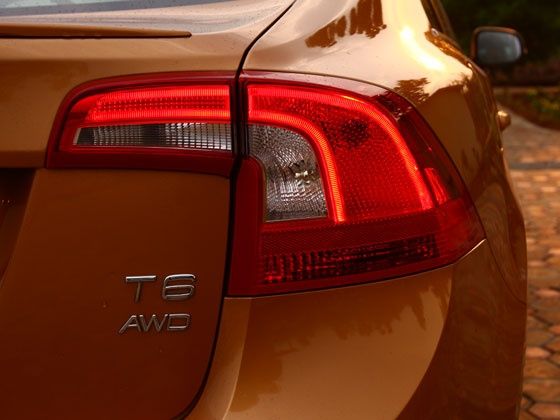
Final words:
So, a good-looking car that drives really well,
remains composed and comfortable no matter what you throw at it, and
presents an alternative image of its owner – so what’s the catch? It is
no secret that Volvo does not demand the sort of brand equity that the
German trio of Audi, BMW and Mercedes-Benz do. That being said, the new S60 does almost everything just right, which is all that a segment challenger can do.
But what sets the Swedish effort apart is the
perfect sense it makes for its intended customers here in India. The
entry-level luxury segment has seen a massive rise over the last few
years, resulting in an overcrowding of C-Classes and 3 Series,
especially in the metros. Now for a space where buyers like to
distinguish themselves from the crowd, landing up in another crowd
doesn’t quite make sense. The S60 offers exactly this option, with
greater comfort, performance and panache. And that is as compelling an
argument as any in favour of a car that prepares to make its mark.
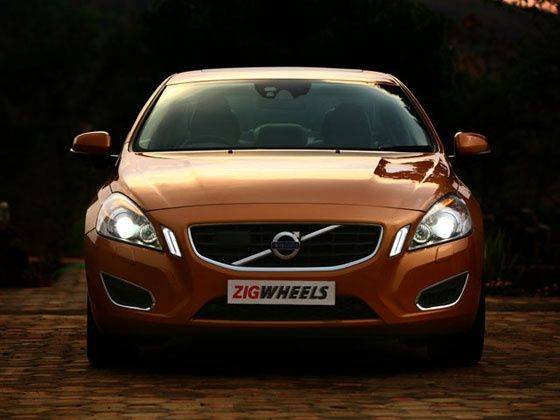
Specifications and test data:
Engine: 3.0 Litre, Turocharged Inline-6 cylinder
Power: 304PS @ 5,600rpm
Torque: 440Nm @ 2,100 - 4,200rpm
Transmission: 6-speed Automatic, AWD
Wheelbase: 2,776mm
Length: 4,628mm
Width: 2,097mm
Height: 1,484mm
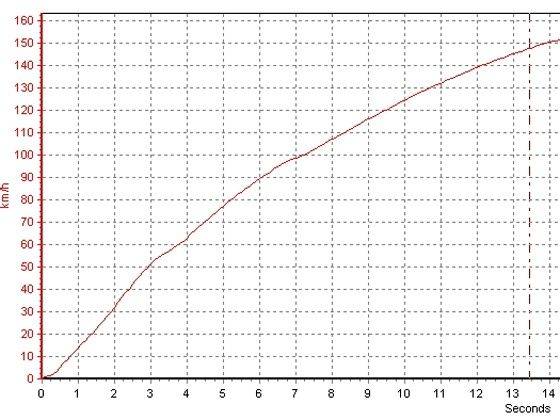
0-60 km/h: 3.76 sec
0-100 km/h: 7.19 sec
Overtaking acceleration in kickdown (40-120 km/h): 8.55 sec
Braking 80-0 km/h: 2.31sec, 26.67 metres
Braking 100-0 km/h: 2.99sec, 41.40 metres
Fuel efficiency (overall): 9 kmpl
Price: T6 Summum variant: Rs 34 lakh, ex-showroom Delhi
BMW 650i : Road Test
by Muntaser Mirkar Photography : Kunal Khadse Posted on 08 Jul 2009
Posted on 08 Jul 2009 836 Views
836 Views 0 Comments
0 Comments
 Posted on 08 Jul 2009
Posted on 08 Jul 2009 836 Views
836 Views 0 Comments
0 Comments
40 degrees
temperatures, possibly one of the toughest summers in the country that
I've seen in my short existence. Scorching heat, rising humidity and
mirages aplenty on every horizon are a sure shot indication of a
persistent summer season that looks like it will stick on forever and
get even worse. Summer - perfect weather to get the top down on that
convertible you just bought and enjoy pure, natural environmental bliss,
right? If you're in Europe that would've been just perfect, but not
exactly true for India now, is it? So then, what do you do with a Rs
1.25 crore piece of Germany's best machinery that allows you to put the
top down and drive around in style? Well, you close the hood and switch
on the air conditioning of course!
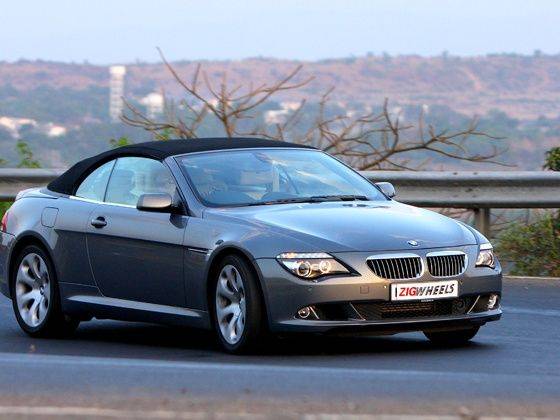

Get alerts on new cars reviewed by ZigWheels
And that's just what we ended up doing almost the whole time that we drove around in the magnificent BMW 650i convertible. So while topless motoring might not be the call of the hour in sizzling India at the moment, could the 650i show any bouts of practicality at all in our country, especially at that price? It's a valid question, and that's what we're going to find out.
Sleek silhouetted sharp machine
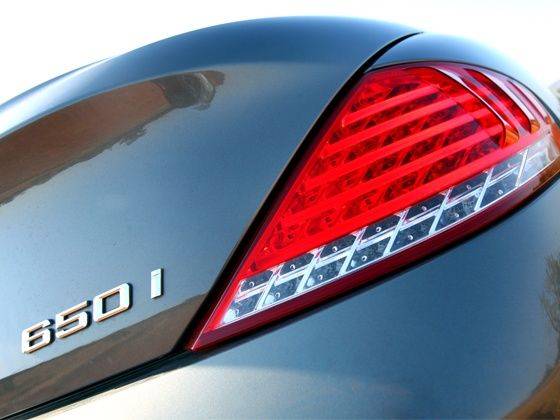
Keep the small button on the central console pressed and the 650i will get its soft top up in just over 20 second, provided you're travelling at 30km/h or less. The way the top is designed is simply outstanding. Instead of looking like an afterthought (like in many other convertibles) the 650i's unit gels perfectly well with not only the A pillar, but also with the short boot at the back. Considering that most 650i's will be driving around town with the top up rather than down in our weather, the seamless integrity of the roof with the rest of the car is an unmistakable boon to the car's visual appeal.
Jump in and brace yourself!
Once you've sunk into the low seats of the
650i it is typical German fare as far the interiors go. There is no
mistaking this car for any other German marque either, you get in and
you instantly know this is a BMW
and it can be nothing else. Peering through from behind the three spoke
steering wheel is the typical BMW instrument console layout. The car
also gets the iDrive system, but not the latest generation one found on
the 7-series.
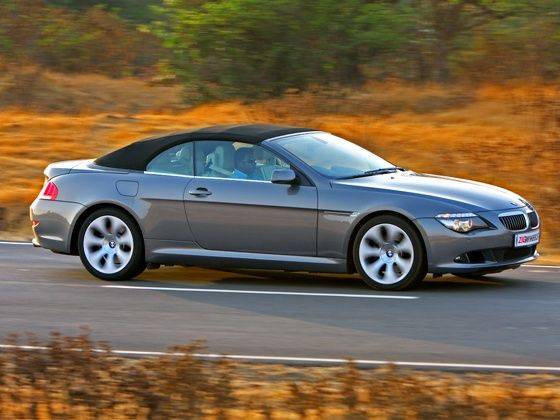
V8 rumble, hair raising!
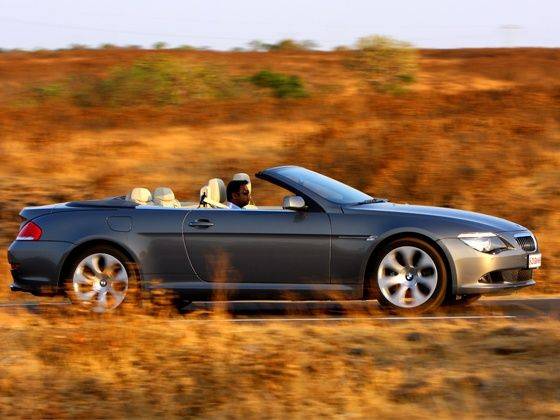
BMWs may be known for their inline 6 engines but under the huge expanse of the 650i's bonnet is a massive 4799cc V8 which combines Double vanos and Valvetronic technology to deliver an unforgettable driving experience. All those technical terms translate into no less than 367PS of power and 490 Nm of torque! Thumb that start/stop button and the V8 rumbles into life with a slight burble before settling down into a smooth hum. With all those horses available at a dab of the throttle there's no doubt about the fact that the 650i is going to be one quick car, but what really excites is the flexibility of the motor. The 4.8 litre V8 powerplant is extremely driveable and even if max power kicks in at a high 6300rpm, it never feels like it's gasping for air.
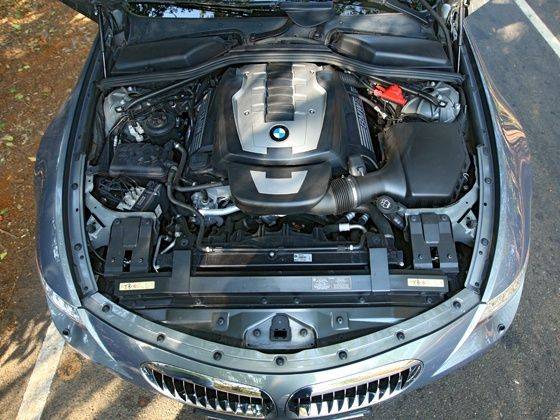
That monster V8 is coupled to a six-speed sport automatic transmission which facilitates some super-quick gear shifts to harness the full potential of the V8. The auto 'box also allows the driver to switch to manual mode and shift gears using the gear selector lever itself, or by using the innovative pedals on the steering wheel. Unlike in most cars that employ paddle shifts (right to upshift, left to downshift), the 650i's paddle shift shifts up a gear when pulled and downshifts when pushed no matter whether you?re using the left or right paddle. This quite clearly eliminates any kind of confusion in up and downshifting especially when you're in the middle of making a turn - a neat touch indeed. Flick on the sport mode with the tiny button behind the gear selector lever and the 650i will perform even quicker shifts through the 'box.
Pedal to the metal

If you've had any doubts about the 650i being a good performer, one look at the car's technical specifications should be enough to set that record straight. The BMW 650i convertible will accelerate from 0-100km/h in just over 7.6 seconds. No matter where you are in the rev range, the car just keeps pulling clean and strong. The car's top speed test saw us return with mile-wide smiles plastered all across our faces - 255.65km/h on our instrumented test machinery with the speedometer needle way past the marked 250km/h indication. Braking was spot on too - the large discs all round hauling the 650i to a stop from 100km/h in just 3.1 seconds and 42.5 metres.
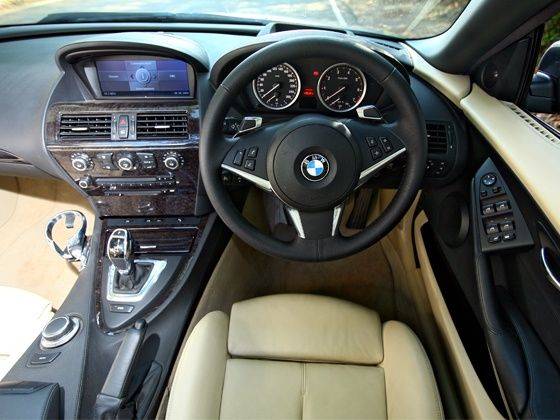
All of the above may not be surprising at all - and quite frankly it was expected. What really made us such big fans of the 650i was the car's impeccable handling - after all it's a BMW! And what took the cake in the end was the way the 650i handled broken tarmac on Pune's roads. You see, the 6 uses 245/45 R19 tyres up front and 275/35 R19 tyres at the back - both pairs being Runflats. Now, that amounts to some really low profile tyres all round which should theoretically translate into a rather rough ride. But what the 650i lacks in tyre profile, it makes up with sheer size - the massive 19-inch tyre diameter coupled with the well-tuned suspension setup soaking out bumps and grinds with ease. The car is still pretty low mind you, so driving over some of our 'neatly crafted' mountainous speed breakers may lead to bit of heartburn.
Got Rs 1.25 crore to spare?
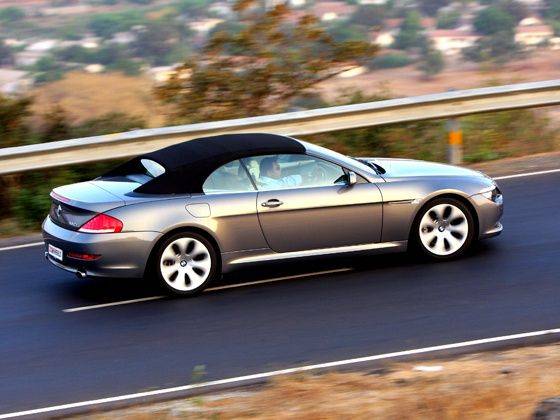
The 650i isn't the car for every garage - even if you have the required amount of money to spare. Even with that rear bench it is still a two-seater for all practical purposes. Our wonderful climate (especially in summers), makes it almost foolish to drive with the top down unless you have an affinity for a severe tan, lungs full of carbon monoxide and nostrils clogged with dust. After having read the above statement, if you still have even a small liking for the 650i, this car belongs to you. After all, for someone with that kind of money there are hardly any better options as far as head turners go. And then you always have the option of driving with the top down after sundown. Fuel efficiency isn't worse than other comparable cars either. So all things considered, the BMW 650i still makes for a rather interesting addition to that already multi-crore garage.
TOYOTA YARIS 2012 ROAD TEST
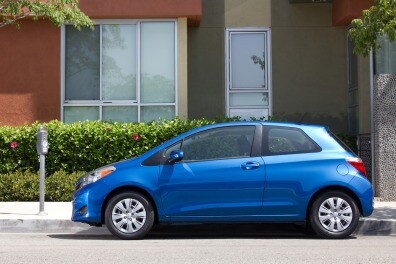 |
| TOYOTA YARIS 2012 |
Pros
Pleasant handling; impressive safety features; assertive sheet metal.Cons
Navigation system isn't available; less cargo capacity than some rivals.Six as Great as Eight
Toyota executives introduce the 2012 Toyota Yaris at a trendy Culver City eatery overrun with cartoonlike sculptures and angst-ridden paintings; it's the kind of place that calls itself a "café/shop/art space." The youthful vibe of the location is no accident, what with Toyota hoping to snare a younger buyer (via an all-digital campaign, naturally) with this new, second-generation Yaris.Of course, you need more than just targeted marketing to make this happen. Though last year's modest 106-horsepower 1.5-liter engine remains, more emphasis has been placed on making the Yaris fun to drive, and our test car is part of an all-new SE trim that features sharper steering and a sport-tuned suspension. Every Yaris gets assertive new sheet metal and spruced-up cabins — no more awkward, center-mounted gauges. And the previous generation's pitiful cargo capacity sees some improvement, with the current model offering up to 68 percent more room for your luggage.
Toyota also hopes to set the Yaris apart on the strength of its safety features, and the car is equipped with nine standard airbags and front seats designed to mitigate whiplash injury.
Overall, it's not a bad package, but it's not enough to make us forget the well-rounded Ford Fiesta, the versatile Honda Fit or the refined Hyundai Accent. Still, this new 2012 Toyota Yaris is undeniably good-looking and pleasant to drive. Factor in its impressive safety amenities along with Toyota's record for reliability and it's easy to see the car striking the right balance for certain buyers.
Performance
The 2012 Toyota Yaris is powered by a 1.5-liter inline-4 good for 106 hp and 103 pound-feet of torque. It's the same engine seen in the outgoing model, but this time around it has less weight to move, since the current Yaris is lighter by about 40 pounds or so. In our test car, the engine is teamed with a new four-speed automatic transmission (a six-speed manual is also available). A four-speed automatic may seem low-tech given that there are many six-speed automatics in this segment, but the setup deserves credit for going about its business without the excessive, fuel-conscious downshifting seen in transmissions offered by larger compact sedans like the Chevrolet Cruze.While the Yaris certainly isn't one of the quicker choices in this segment, there's enough pep on hand to allow you to navigate both city and freeway traffic with no panicked moments. And what our SE test car lacks in speed, it makes up for by way of its affable handling; it feels light and spry on the road, and maintains its composure in corners.
Our test car's driving dynamics represent an improvement over those of the previous Yaris, and that's exactly as Toyota planned it; the SE features a sport-tuned suspension designed to make the daily commute more enjoyable. Steering is quicker as well, and the chassis has been engineered for a tauter, more together feel even as a wheelbase that's 2 inches longer makes the ride more stable and comfortable.
With the automatic transmission, the Yaris gets EPA-rated mileage of 30 city/35 highway mpg and 32 mpg combined. These figures are quite respectable — the base model Honda Fit gets 28/35/31 and the Nissan Versa gets 24/32/27. Still, buyers who want an even more frugal choice will want to take a look at the Hyundai Accent (30/40/33) and Ford Fiesta with the SFE option (29/40/33).
Comfort
One consequence of the SE's keener suspension is ride quality that falls on the stiffer side of the spectrum, but there's still enough comfort in the mix to keep the car well-behaved on the road. Most surface unpleasantness is capably neutralized.The front seats are perched high to present commanding views of the road ahead. The SE model features sport seats, but they're flatter and less aggressively bolstered than most others we've encountered, which makes them suitable even for wider drivers. The chairs are well-padded and supportive, and serve as an agreeable roost throughout the three or so hours we spend piloting the Yaris through Los Angeles and Santa Monica on our test loop.
There's some road and tire noise to be heard as the 2012 Toyota Yaris navigates surface streets, and when we hit the highway, wind noise also makes an appearance. None of it is excessive, but if you're a stickler for cabin serenity, keep in mind that the Accent offers a quieter time behind the wheel.
Function
As is the case with most economy cars, the Yaris boasts a control layout that's blessedly intuitive; heat and air-conditioning are governed by a familiar three-knob setup. Audio controls are managed via a handful of logically placed buttons and knobs; four buttons to the left of the center stack allow you to select a band, and they're joined by a large volume control knob, and buttons to the bottom right that allow you to assign or select your favorite stations. The display screen is on the small side, but there's enough real estate to present information in an easily legible way.Once upon a time, you didn't expect much by way of tech from cars in the Yaris' humble price range, but those days are well behind us. Our SE features Bluetooth with phonebook access, music streaming via Bluetooth wireless technology and an iPod interface. There's also a USB port, though we wish it had been placed in a less awkward location; it's found deep in the roof of the glovebox.
One tech feature you won't find in the 2012 Toyota Yaris is a factory-installed navigation system. However, we suspect that this is less of an issue these days than it was in times past, since there are currently tons of portable and handheld navigation units on the market that do the job for thousands less than the costly factory-installed systems you get with a new car.
There's not much by way of in-cabin storage. There's no center console bin and the door bins are small, though they are equipped to fit taller water bottles.
On the plus side, though, the Yaris' backseat is surprisingly spacious, with lots of legroom. Additionally, since the front seats are mounted high off the ground, they offer ample space underneath where those seated in the second row can plant their toes and feet if they need to.
At 15.6 cubic feet, cargo capacity in our SE represents a big improvement over that of the previous Yaris. Still, it trails that of many others in this segment; you'll get more utility with the Fit (20.6 cubic feet), Accent (21.2 cubic feet) and Versa (17.8 cubic feet).
Visibility is decent from most angles, thanks to the car's generous greenhouse.
Design/Fit and Finish
With its heroic square jaw and lower stance (0.6 inch shorter than its predecessor), the 2012 Toyota Yaris speaks a design language that's more forceful than that of the previous generation. The cabin design is simple yet attractive; the center stack, especially, is intuitively laid out, while at the same time reflecting modern flair.Materials quality is good for this segment, though not especially ambitious. Buttons feel stable and secure, and knobs turn with precise, well-damped movement.







